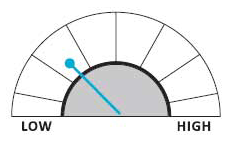IPF
Inflation Protection Fund

Frank Holsteen
Managing Director, Investment Management

Hoa Quach, CFA
Director, Public Markets

Connie Christian, CFA
Manager, Fixed Income
| Fund Snapshot | |
| Inception | January 5, 2004 |
| Exp. Ratio | 0.45% for 2024 |
| Benchmark | IPF Benchmark |
| Fund Assets | $1,112 Million as of December 31, 2024 |
| Holdings | December 31, 2024 |
| Unit Price History | Wespath Funds Price History |
| For More Information | Investment Funds Description – P Series |

| 3 mo | YTD | 1 yr | 3 yr | 5 yr | 10 yr | |
| Inflation Protection Fund | 3.63% | 3.63% | 4.93% | 0.87% | 4.30% | 2.79% |
| IPF Benchmark | 4.64% | 4.64% | 6.81% | -1.20% | 3.05% | 2.95% |
Inflation Protection Fund vs. Peer Group Universe
